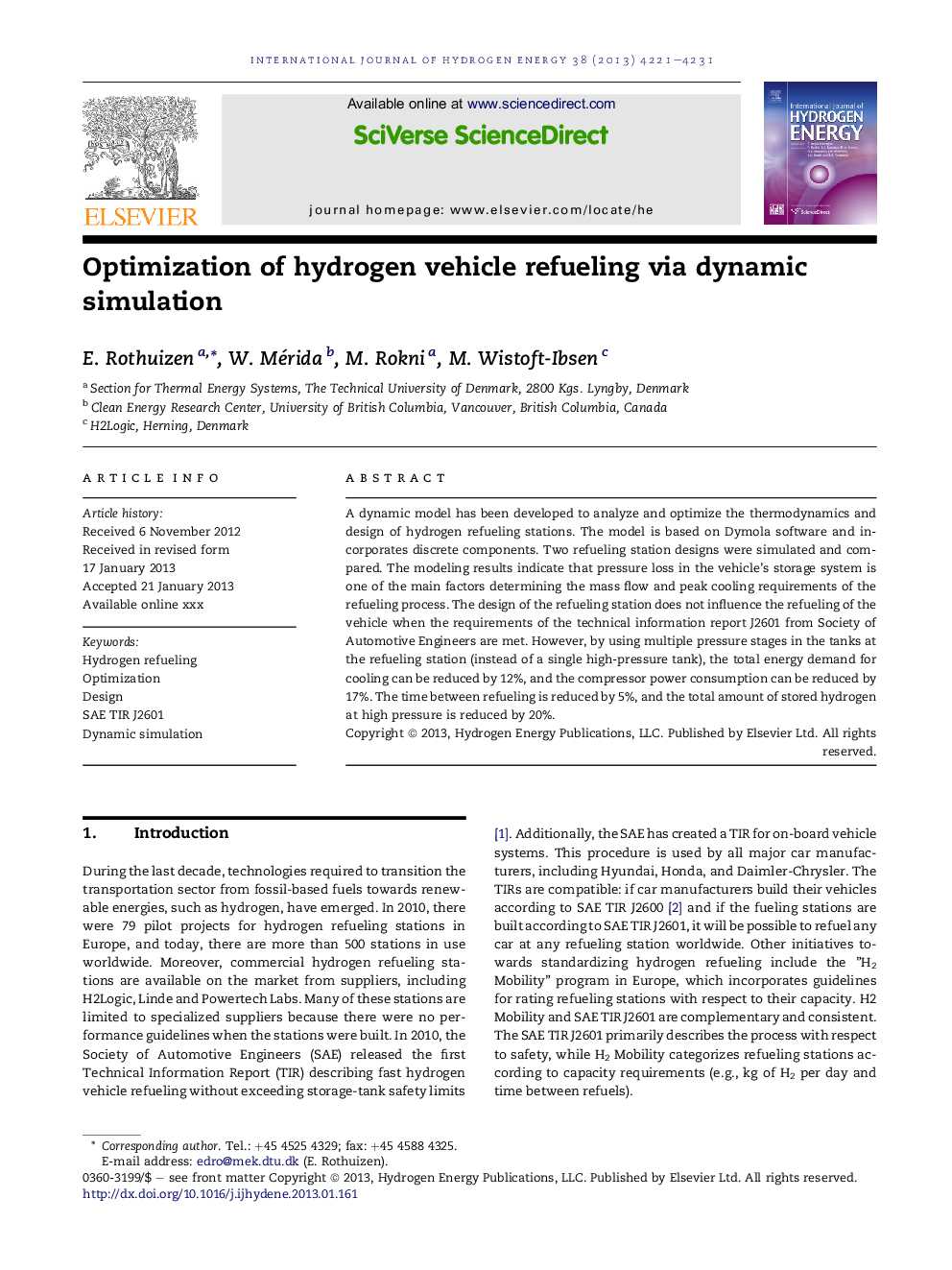| Article ID | Journal | Published Year | Pages | File Type |
|---|---|---|---|---|
| 1278114 | International Journal of Hydrogen Energy | 2013 | 11 Pages |
A dynamic model has been developed to analyze and optimize the thermodynamics and design of hydrogen refueling stations. The model is based on Dymola software and incorporates discrete components. Two refueling station designs were simulated and compared. The modeling results indicate that pressure loss in the vehicle's storage system is one of the main factors determining the mass flow and peak cooling requirements of the refueling process. The design of the refueling station does not influence the refueling of the vehicle when the requirements of the technical information report J2601 from Society of Automotive Engineers are met. However, by using multiple pressure stages in the tanks at the refueling station (instead of a single high-pressure tank), the total energy demand for cooling can be reduced by 12%, and the compressor power consumption can be reduced by 17%. The time between refueling is reduced by 5%, and the total amount of stored hydrogen at high pressure is reduced by 20%.
► Thermodynamic simulation model for analysis of high pressure hydrogen refueling. ► Takes SAE TIR J2601 into account to simulate a refueling station. ► Vehicles pressure loss sets mass flow and cooling demand at the station. ► High vehicle pressure loss results in low peak mass flow and peak cooling demand. ► Cascade fueling reduces compressor work and cooling capacity significantly.
